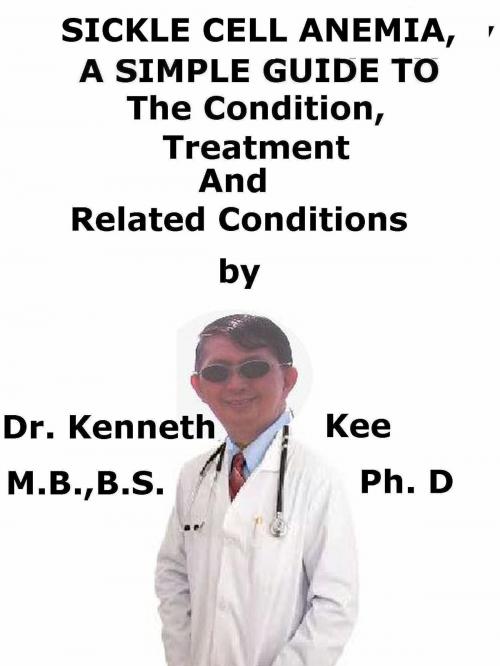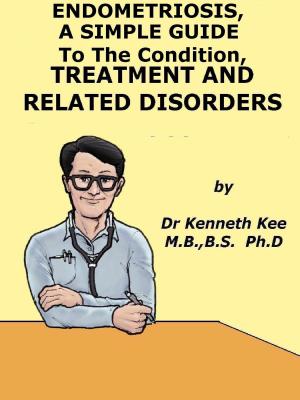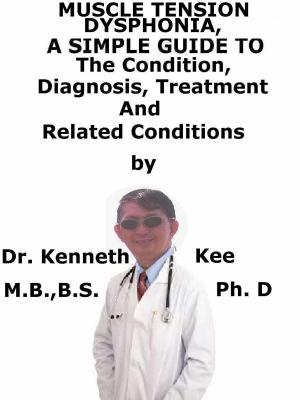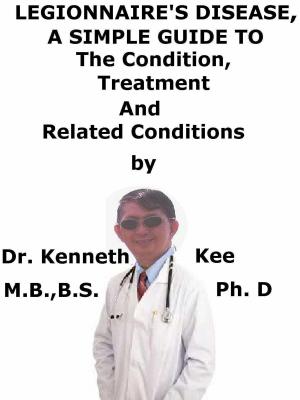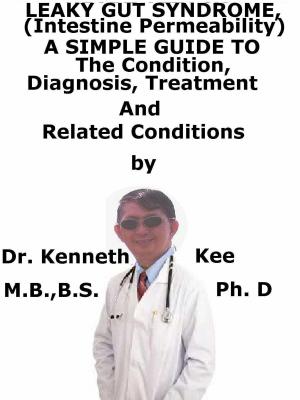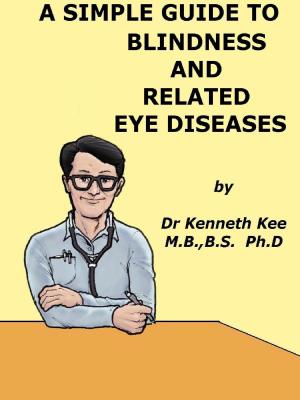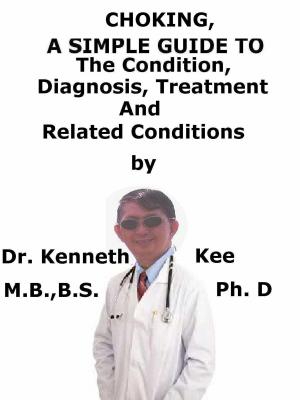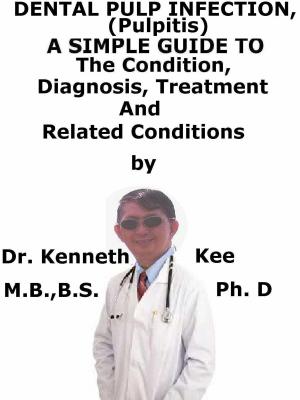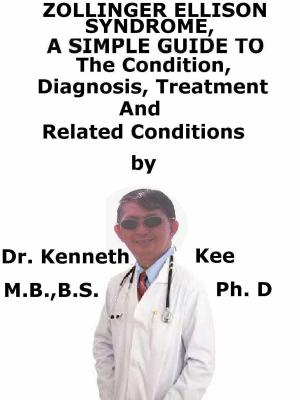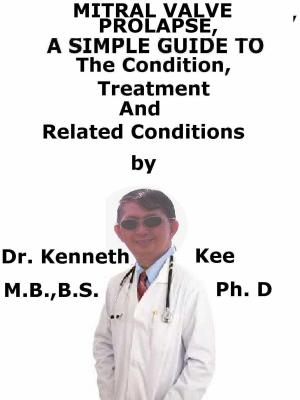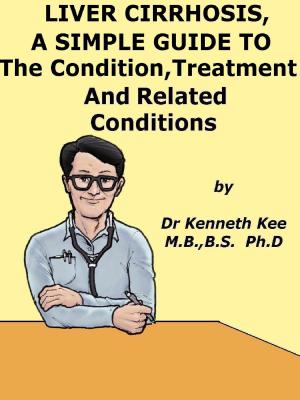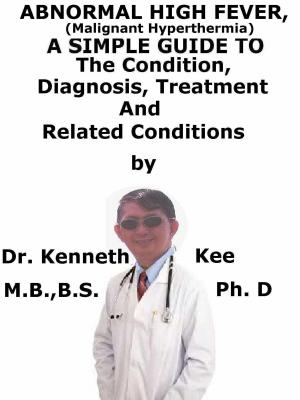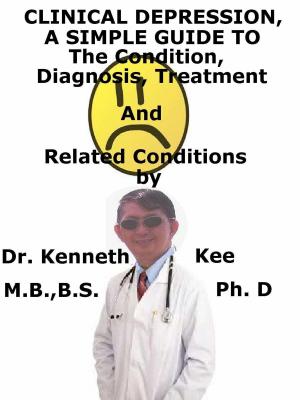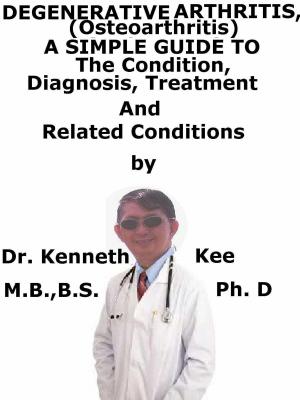Sickle Cell Anemia, A Simple Guide To The Condition, Treatment And Related Conditions
Nonfiction, Health & Well Being, Medical, Specialties, Internal Medicine, Hematology, Health, Ailments & Diseases, Genetic| Author: | Kenneth Kee | ISBN: | 9781370497911 |
| Publisher: | Kenneth Kee | Publication: | December 11, 2016 |
| Imprint: | Smashwords Edition | Language: | English |
| Author: | Kenneth Kee |
| ISBN: | 9781370497911 |
| Publisher: | Kenneth Kee |
| Publication: | December 11, 2016 |
| Imprint: | Smashwords Edition |
| Language: | English |
Sickle cell anemia is the most common form of sickle cell disease (SCD).
SCD is a serious disorder in which the body makes sickle-shaped red blood cells.
Sickle-shaped means that the red blood cells are shaped like a crescent.
Sickle cells contain abnormal hemoglobin called sickle hemoglobin or hemoglobin S.
Sickle hemoglobin causes the cells to develop a sickle or crescent, shape.
Sickle cells are stiff and sticky.
They tend to block blood flow in the blood vessels of the limbs and organs.
Blocked blood flow can cause pain and organ damage.
It can also raise the risk for infection.
Anemia is a condition in which the blood has a lower than normal number of red blood cells and lower hemoglobin.
In sickle cell anemia, the abnormal sickle cells usually die after only about 10 to 20 days unlike the 120 days of normal red blood cell.
The bone marrow cannot make new red blood cells fast enough to replace the dying ones.
Sickle cell anemia is an inherited, lifelong disease.
The person inherits two genes for sickle hemoglobin one from each parent.
People who inherit a sickle hemoglobin gene from one parent and a normal gene from the other parent have a condition called sickle cell trait.
Sickle cell trait is different than sickle cell anemia.
People who have sickle cell trait do not have the disease.
Like people who have sickle cell anemia, people who have sickle cell trait can pass the sickle hemoglobin gene to their children.
Sickle cell anemia is present at birth but many infants do not show any signs until after 4 months of age.
The most common signs and symptoms are linked to anemia and pain.
The most common symptom of anemia is fatigue (feeling tired or weak).
There is also:
a. Shortness of breath
b. Dizziness
c. Headaches
d. Coldness in the hands and feet
e. Paler than normal skin or mucous membranes (the tissue that lines the nose, mouth, and other organs and body cavities)
f. Jaundice
Sudden pain throughout the body is a common symptom of sickle cell anemia.
This pain is called a sickle cell crisis.
Sickle cell crises often affect the bones, lungs, abdomen, and joints.
These crises occur when sickled red blood cells block blood flow to the limbs and organs.
This can cause pain and organ damage.
Chronic pain often lasts for weeks or months and can be hard to bear and mentally draining
A simple blood test done at any time during a person's lifespan can detect whether he or she has sickle hemoglobin.
Doctors also can diagnose sickle cell disease before and after birth.
Sickle cell anemia has no widely available cure.
However treatments can help relieve symptoms and treat complications.
The goals of treating sickle cell anemia are to relieve pain; prevent infections, organ damage, and strokes; and control complications
Blood and marrow stem cell transplants may offer a cure for a small number of people who have sickle cell anemia.
Severe sickle cell anemia can be treated with a medicine called hydroxyurea.
This medicine prompts the body to make fetal hemoglobin
New medicine are:
Decitabine.
Adenosine A2a receptor agonists
TABLE OF CONTENT
Introduction
Chapter 1 Sickle Cell Anemia
Chapter 2 More Facts about Sickle Cell Anemia
Chapter 3 Treatment of Sickle Cell Anemia
Chapter 4 Hemolytic Anemia
Chapter 5 G6PD Deficiency
Chapter 6 Thalassemia
Epilogue
Sickle cell anemia is the most common form of sickle cell disease (SCD).
SCD is a serious disorder in which the body makes sickle-shaped red blood cells.
Sickle-shaped means that the red blood cells are shaped like a crescent.
Sickle cells contain abnormal hemoglobin called sickle hemoglobin or hemoglobin S.
Sickle hemoglobin causes the cells to develop a sickle or crescent, shape.
Sickle cells are stiff and sticky.
They tend to block blood flow in the blood vessels of the limbs and organs.
Blocked blood flow can cause pain and organ damage.
It can also raise the risk for infection.
Anemia is a condition in which the blood has a lower than normal number of red blood cells and lower hemoglobin.
In sickle cell anemia, the abnormal sickle cells usually die after only about 10 to 20 days unlike the 120 days of normal red blood cell.
The bone marrow cannot make new red blood cells fast enough to replace the dying ones.
Sickle cell anemia is an inherited, lifelong disease.
The person inherits two genes for sickle hemoglobin one from each parent.
People who inherit a sickle hemoglobin gene from one parent and a normal gene from the other parent have a condition called sickle cell trait.
Sickle cell trait is different than sickle cell anemia.
People who have sickle cell trait do not have the disease.
Like people who have sickle cell anemia, people who have sickle cell trait can pass the sickle hemoglobin gene to their children.
Sickle cell anemia is present at birth but many infants do not show any signs until after 4 months of age.
The most common signs and symptoms are linked to anemia and pain.
The most common symptom of anemia is fatigue (feeling tired or weak).
There is also:
a. Shortness of breath
b. Dizziness
c. Headaches
d. Coldness in the hands and feet
e. Paler than normal skin or mucous membranes (the tissue that lines the nose, mouth, and other organs and body cavities)
f. Jaundice
Sudden pain throughout the body is a common symptom of sickle cell anemia.
This pain is called a sickle cell crisis.
Sickle cell crises often affect the bones, lungs, abdomen, and joints.
These crises occur when sickled red blood cells block blood flow to the limbs and organs.
This can cause pain and organ damage.
Chronic pain often lasts for weeks or months and can be hard to bear and mentally draining
A simple blood test done at any time during a person's lifespan can detect whether he or she has sickle hemoglobin.
Doctors also can diagnose sickle cell disease before and after birth.
Sickle cell anemia has no widely available cure.
However treatments can help relieve symptoms and treat complications.
The goals of treating sickle cell anemia are to relieve pain; prevent infections, organ damage, and strokes; and control complications
Blood and marrow stem cell transplants may offer a cure for a small number of people who have sickle cell anemia.
Severe sickle cell anemia can be treated with a medicine called hydroxyurea.
This medicine prompts the body to make fetal hemoglobin
New medicine are:
Decitabine.
Adenosine A2a receptor agonists
TABLE OF CONTENT
Introduction
Chapter 1 Sickle Cell Anemia
Chapter 2 More Facts about Sickle Cell Anemia
Chapter 3 Treatment of Sickle Cell Anemia
Chapter 4 Hemolytic Anemia
Chapter 5 G6PD Deficiency
Chapter 6 Thalassemia
Epilogue
